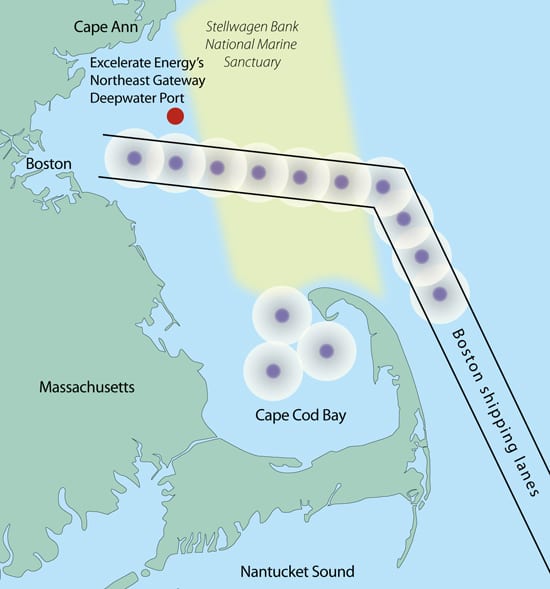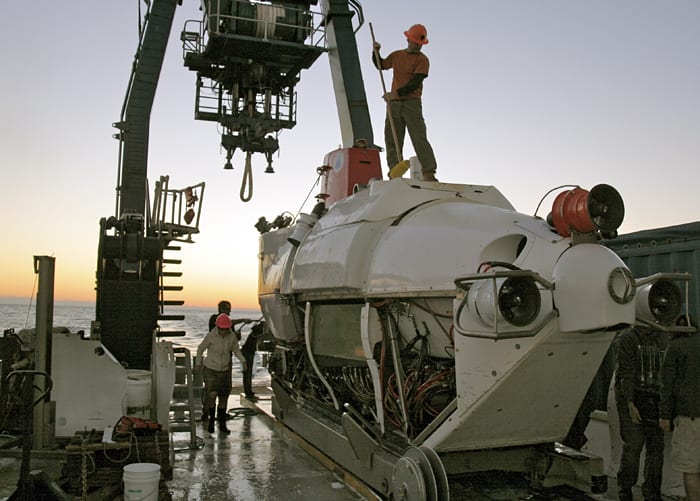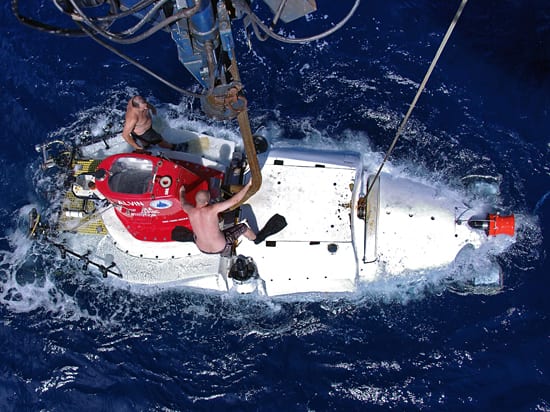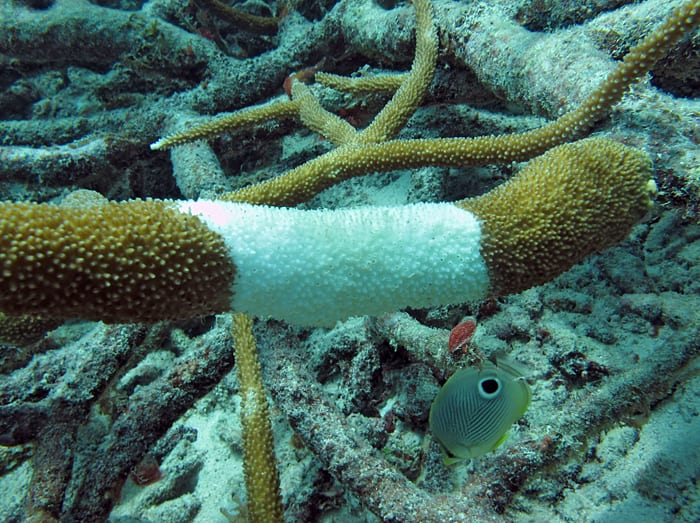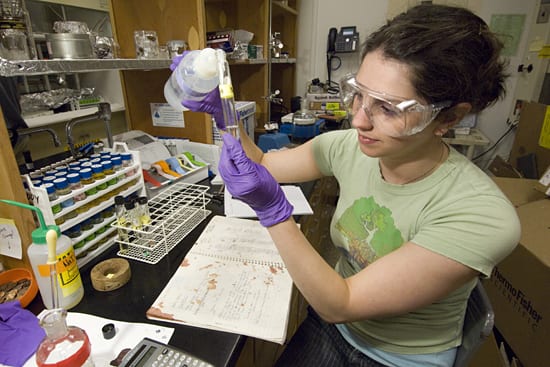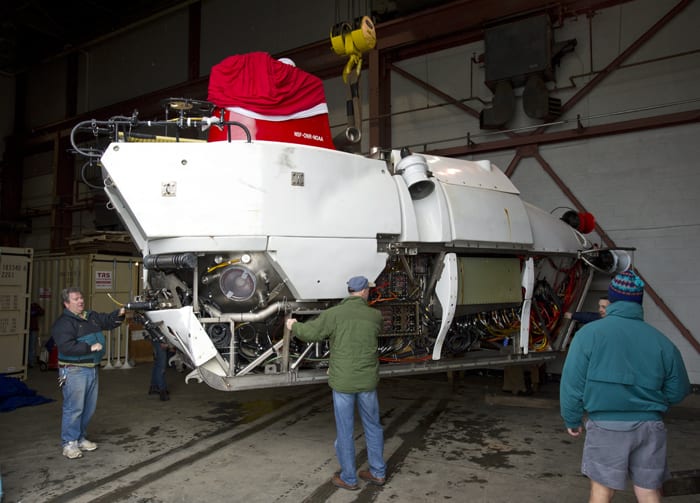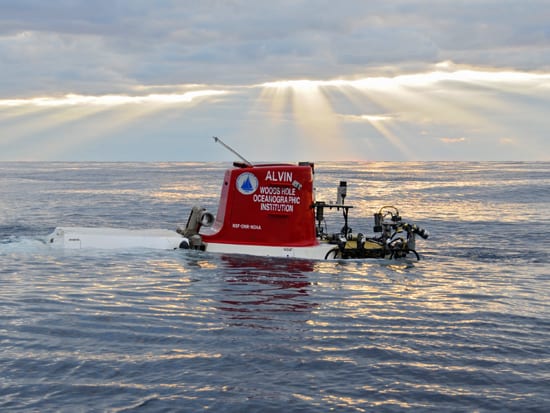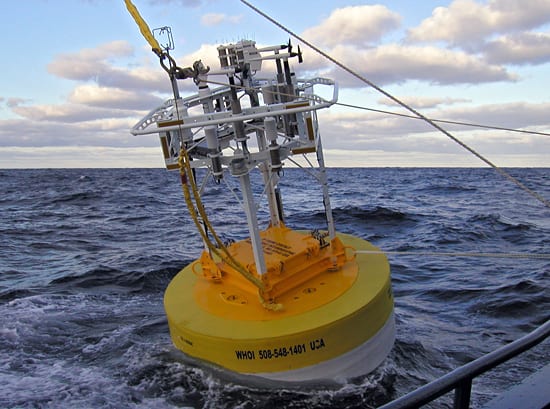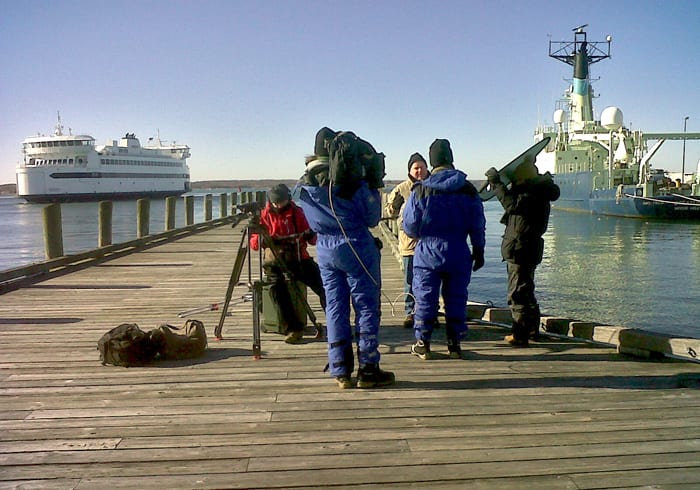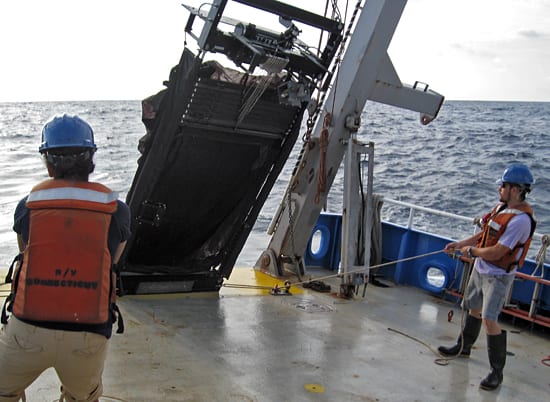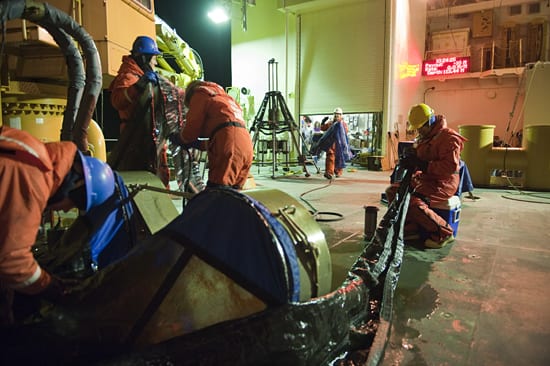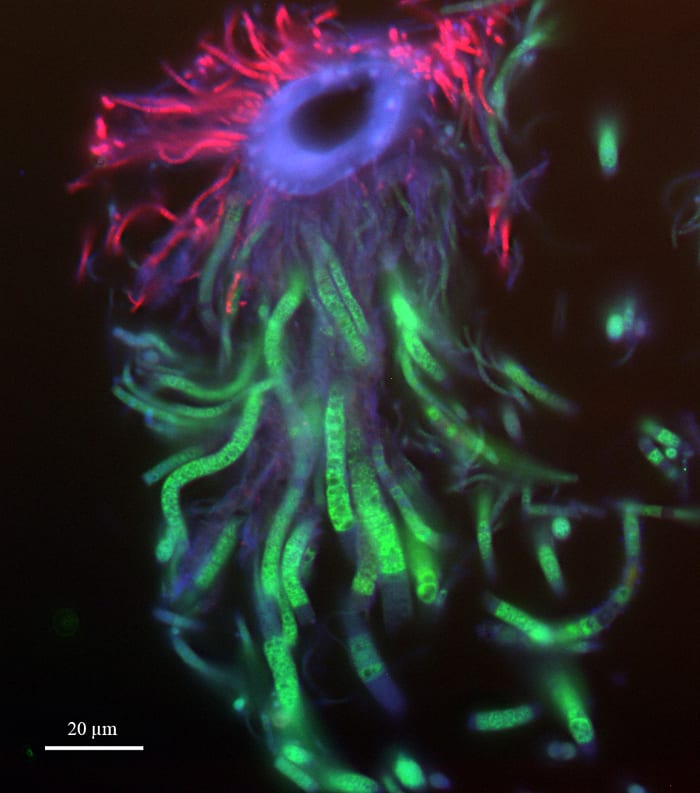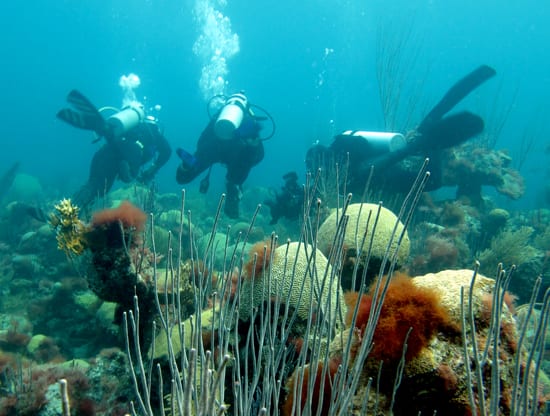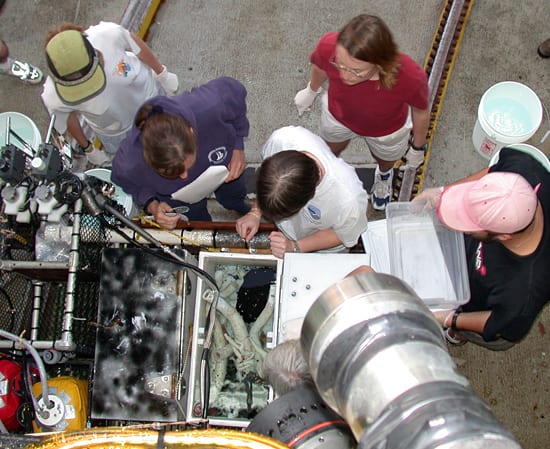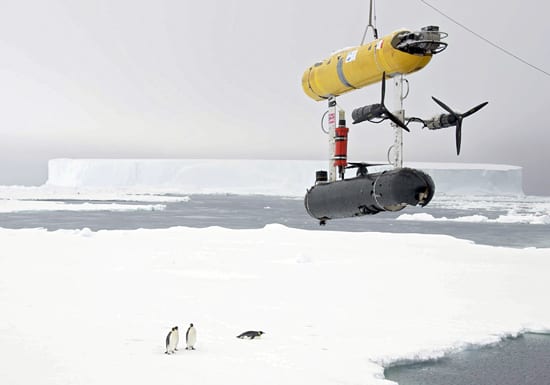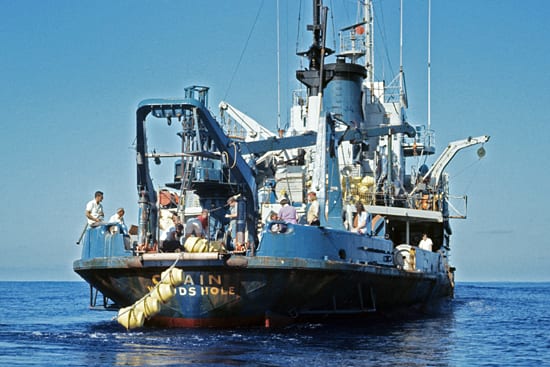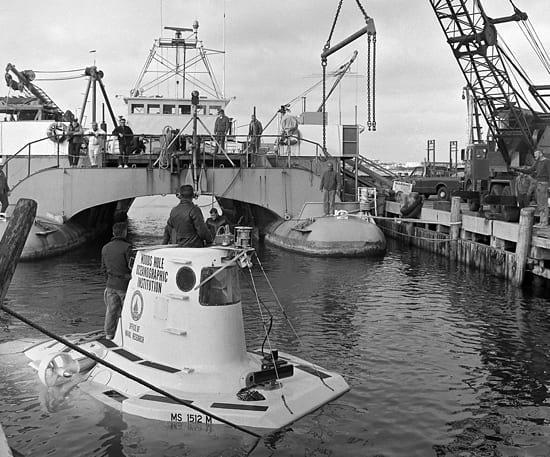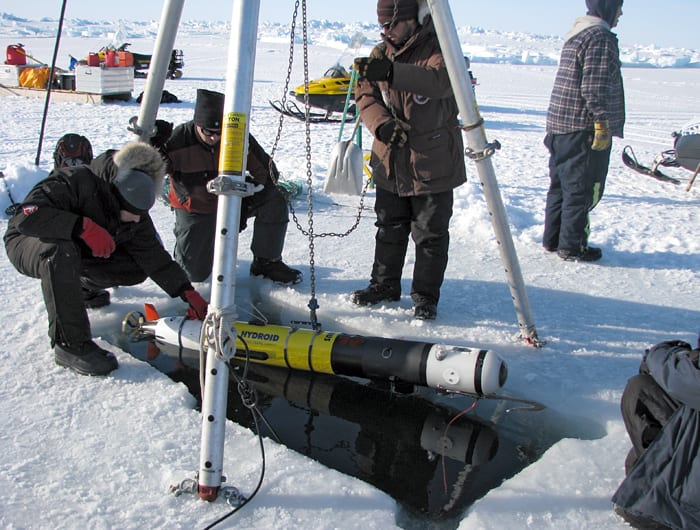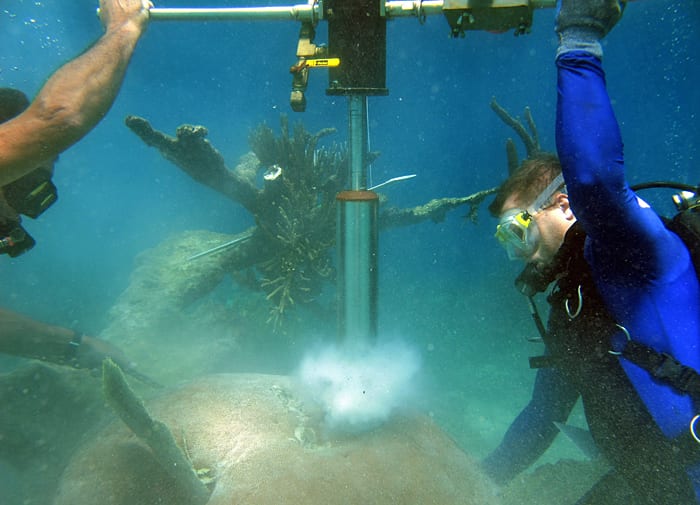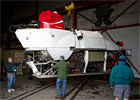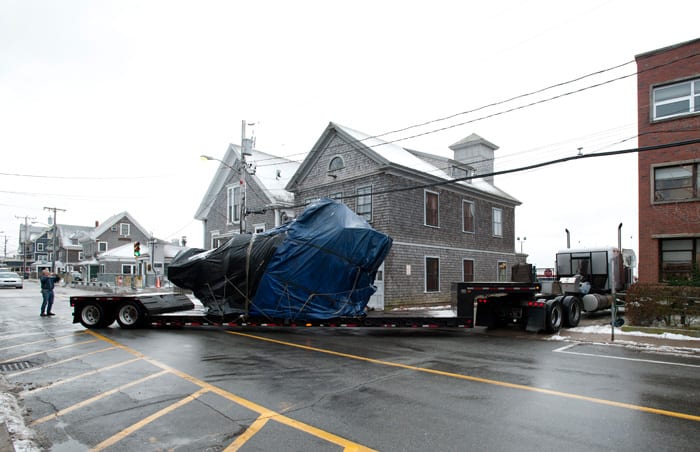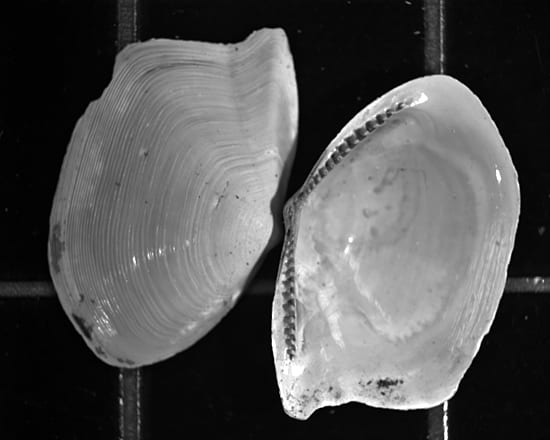Multimedia
Preventing Ship-Whale Collisions
In an effort to avert lethal collisions between ships and endangered right whales, 10 buoy systems (purple dots) were installed in the Boston Harbor shipping lanes, beginning in 2007. Each…
Read MoreScrubbing the Sub
After the last dive of any Alvin cruise the sub’s crew and science party get out on deck to take the skins off the vehicle and scrub everything down with…
Read MoreReady for Recovery
A camera strategically perched on top of the research vessel Atlantis’s A-frame, captures the submersible Alvin as it is recovered from a dive in April 2010. A swimmer (bottom, right)…
Read MoreSigns of stress
A staghorn coral branch (Acropora cervicornis) on a reef west of St. Thomas, U.S. Virgin Islands, suffers from White Band Syndrome, a coral disease that has been a significant source…
Read MoreThe Origin of Plastic Marine Debris
Ellen Murphy, a high school student from Minnesota, examines samples of plastic in WHOI marine chemist Chris Reddy’s laboratory in May 2008. Murphy, Reddy, and other lab technicians and students…
Read MoreAlvin Home Again
In December 2010, the deep-submergence vehicle Alvin was trucked to Woods Hole from Jacksonville, Florida, where its support ship R/V Atlantis is undergoing routine maintenance. Alvin was then moved by…
Read MoreOceanography by the Numbers
Jessica Benthuysen, a recent graduate of the MIT/WHOI Joint Program, developed a sophisticated mathematical model of upwelling, the vertical motion of water that occurs in certain parts of the ocean.…
Read MoreAlvin in the Gulf of Mexico–And Beyond
The human-occupied vehicle Alvin traveled to the Gulf of Mexico in late 2010, where it made its final series of dives before undergoing an 18-month upgrade. Far from sailing into…
Read MoreAt Work in the Gulf Stream
WHOI technicians and engineers from the Upper Ocean Processes Group deployed this CLIMODE (CLIvar MOde water Dynamics Experiment) buoy in the Gulf Stream in late 2005. Sensors on the buoy…
Read MoreBundle Up!
A documentary crew films an interview with WHOI deep-sea biologist Tim Shank (center in brown jacket) on Dyer’s Dock during a bitterly cold January morning in Woods Hole. The interview,…
Read MoreOver it Goes!
The massive metal frame connected to long collecting nets isn’t easy to handle. Here, WHOI summer student Jon Fincke (right) and University of Connecticut grad student Paola Batta-Lona take the…
Read MoreCasting and Cleaning Nets
Researchers aboard the U.S. Coast Guard Cutter Healy gather samples collected from bongo nets during a May 2009 expedition to the Bering Sea. The nets—also known as twin plankton nets…
Read MoreColorful Microbes
How do shrimp make a living at hydrothermal vents? They have help from a variety of microbes. This image shows two kinds of bacteria attached to a hair-like structure called…
Read MoreThe Reef and the Moon
Gliding over a Bermudan coral reef in October 2010, WHOI scientist Anne Cohen (center) and post-doctoral investigator Neal Cantin (left) were followed by a BBC cameraman. The group was filming…
Read MoreTubeworms Through the Years
WHOI geologist Susan Humphris (center, in blue sweatshirt) and colleagues inspect tubeworms and other samples in Alvin‘s collection basket during a 2002 expedition to the Galápagos Rift, where seafloor hydrothermal…
Read MoreSentry in the Gulf of Mexico
The autonomous underwater vehicle (AUV) Sentry, shown here in the Gulf of Mexico in July 2010 with WHOI’s (from left) Cameron McIntyre, Andy Billings, and James Kinsey. In the background…
Read MoreUm, I Love It But I Hope It Comes With a Manual
A group of penguins watch as an autonomous underwater vehicle (AUV) SeaBED is deployed from the deck of the R/V James C. Ross in the Weddell Sea in November 2010.…
Read MoreA MODE of Studying the Ocean
A string of mooring floats goes over the fantail of the WHOI research vessel Chain in 1973 during the Mid-Ocean Dynamics Experiment (MODE). Conceived a decade earlier, this study of…
Read MoreA Match Made in Woods Hole
The manned submersible Alvin (foreground) undergoes testing in Great Harbor, Woods Hole, in the late 1960s. In the background is the R/V Lulu, Alvin‘s first tender and the namesake of the…
Read MoreREMUS Gets Around
With the wind chill factor below -50°, a WHOI research team deploys a REMUS 100 autonomous underwater vehicle in a hole in sea ice off Barrow, Alaska, in March 2010.…
Read MoreDrilling for Coral History
WHOI scientists Pat Lohmann (left) and Neal Cantin drill into a massive starlet coral on a reef north of St. Thomas, U.S. Virgin Islands, to remove a core sample. The…
Read MoreAlvin Returns to Woods Hole
1_127357.jpg
Read MoreAlvin Returns to Woods Hole
1_127357.jpg
Read MoreShells in the Sands of Time
In sediments beneath the Sargasso Sea, WHOI geologist Lloyd Keigwin found a 17,500-year-old clamshell and a mystery: Why was this South Atlantic species living in deep water near Bermuda at…
Read More
